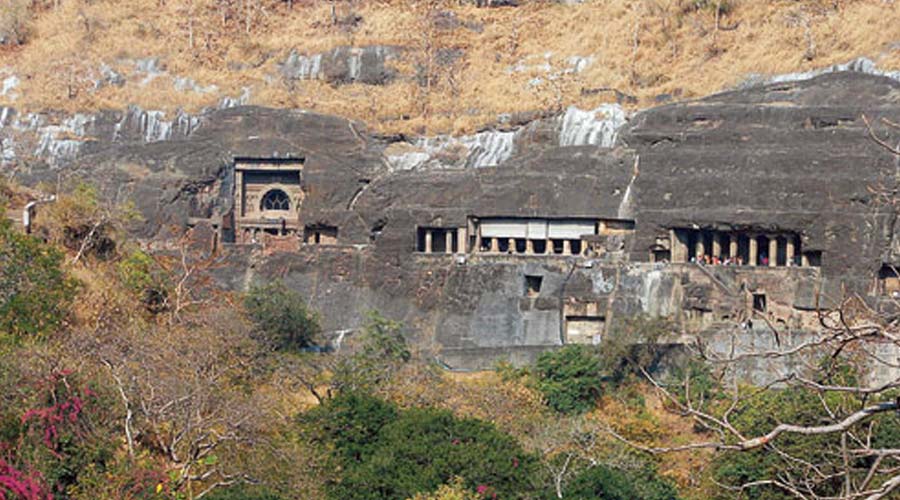A senior official of the Archaeological Survey of India (ASI) has expressed the need to control tourist footfall at the world famous Ajanta caves in Maharashtra to preserve its paintings for a longer time.
The popular UNESCO world heritage site, comprising 30 rock-cut Buddhist cave monuments, is located about 100 km from the Aurangabad district headquarters.
The caves have paintings depicting the life of Gautam Buddha.
Every week, thousands of tourists visit the monument.
"The presence of a large number of tourists increases humidity inside the caves, causing a negative impact on the paintings there," ASI's Aurangabad circle superintendent Dr Milan Kumar Chauley said at an event on Wednesday.
Some of the paintings have got damaged over a period of time due to this and other reasons, he said.
"Hence, to save the paintings for a longer period of time, the way out is to restrict the footfall and allow fewer people inside the caves," Chauley said.
He also said they can send only 40 tourists inside the caves at a time for a period of 10 minutes. In such a short span, the visitors cannot even see the paintings properly as they need time to get acclimatised to the darkness inside the caves, he added.
There is an interpretation centre constructed by the state government outside the cave complex.
"Earlier, we (ASI) had demanded to hand it over to us so that we can display the replicas of these paintings there and the footfall can be controlled. But the state government has not taken any action so far," the official said.
Speaking about proper management and people's responsibility at tourist sites, Chauley said India's north east region should serve as a model for the country.
"If a tourist litters in north eastern states, the licence of their vehicle driver is temporarily suspended. Even small tourist destinations there are well maintained and taken care of," he said.
In Maharashtra, professional people with tourism background should be deployed in offices handling tourism activities, the official opined.
People from other fields cannot easily understand the needs of visitors and the tourism industry, he said.











